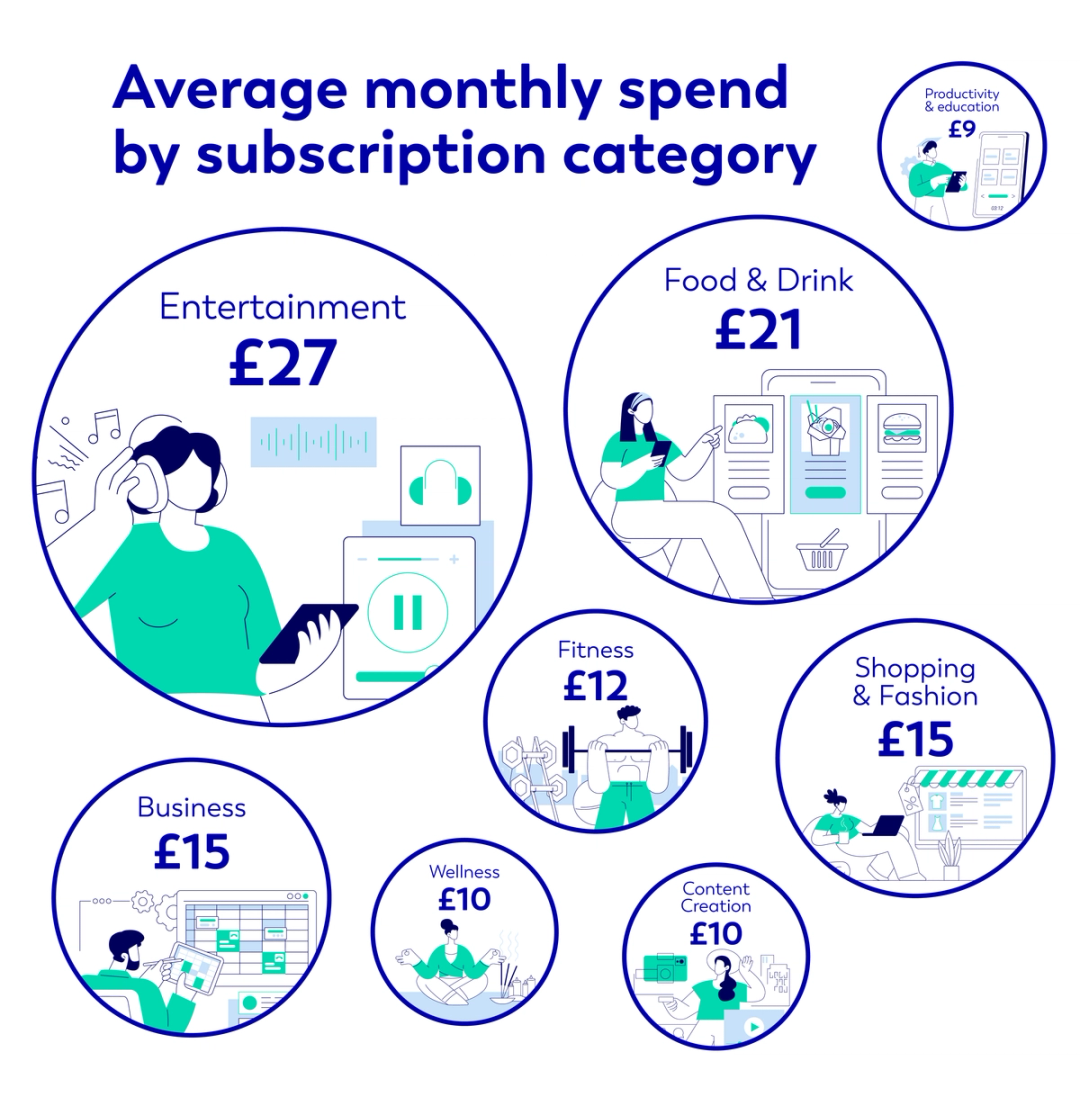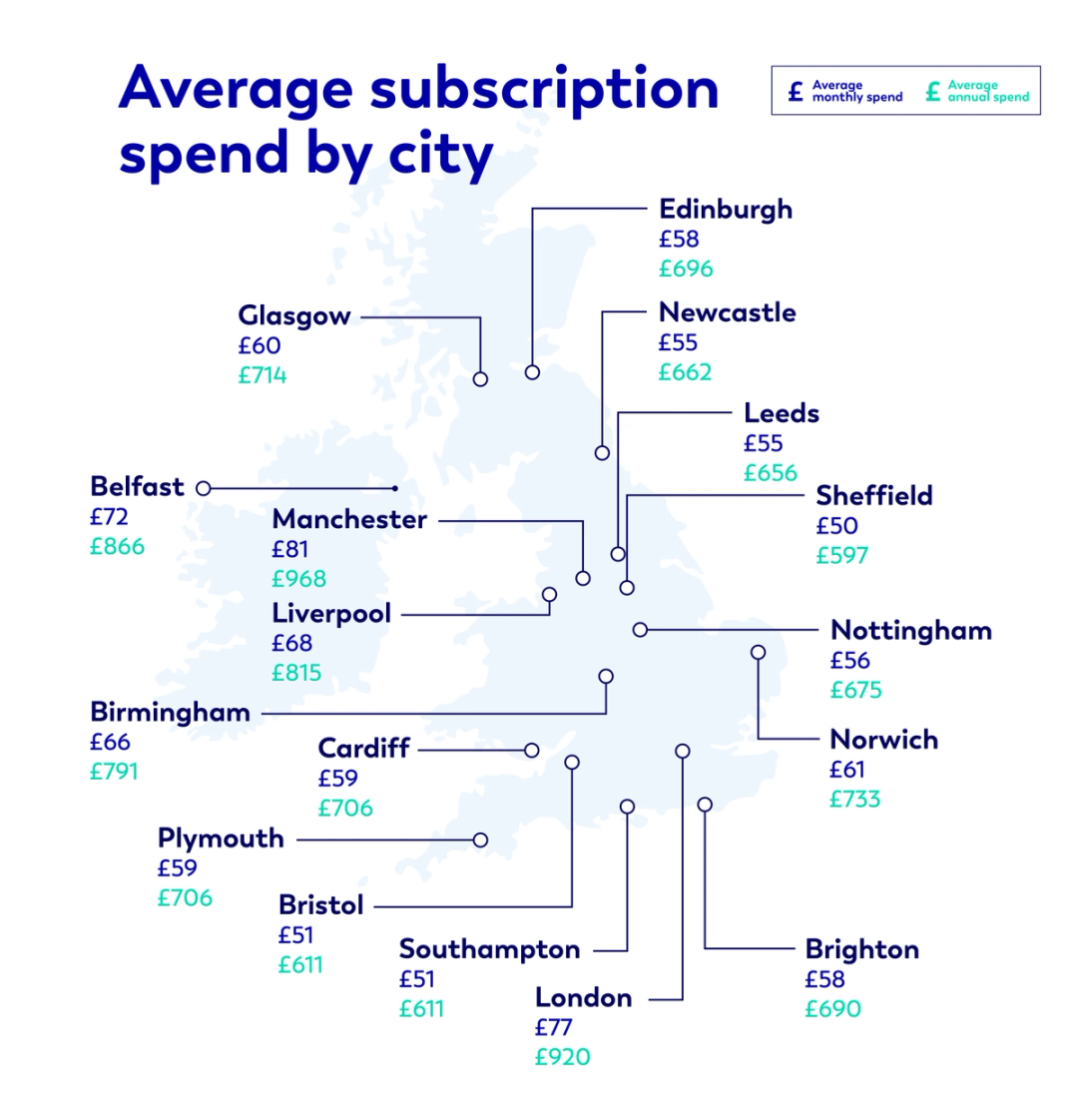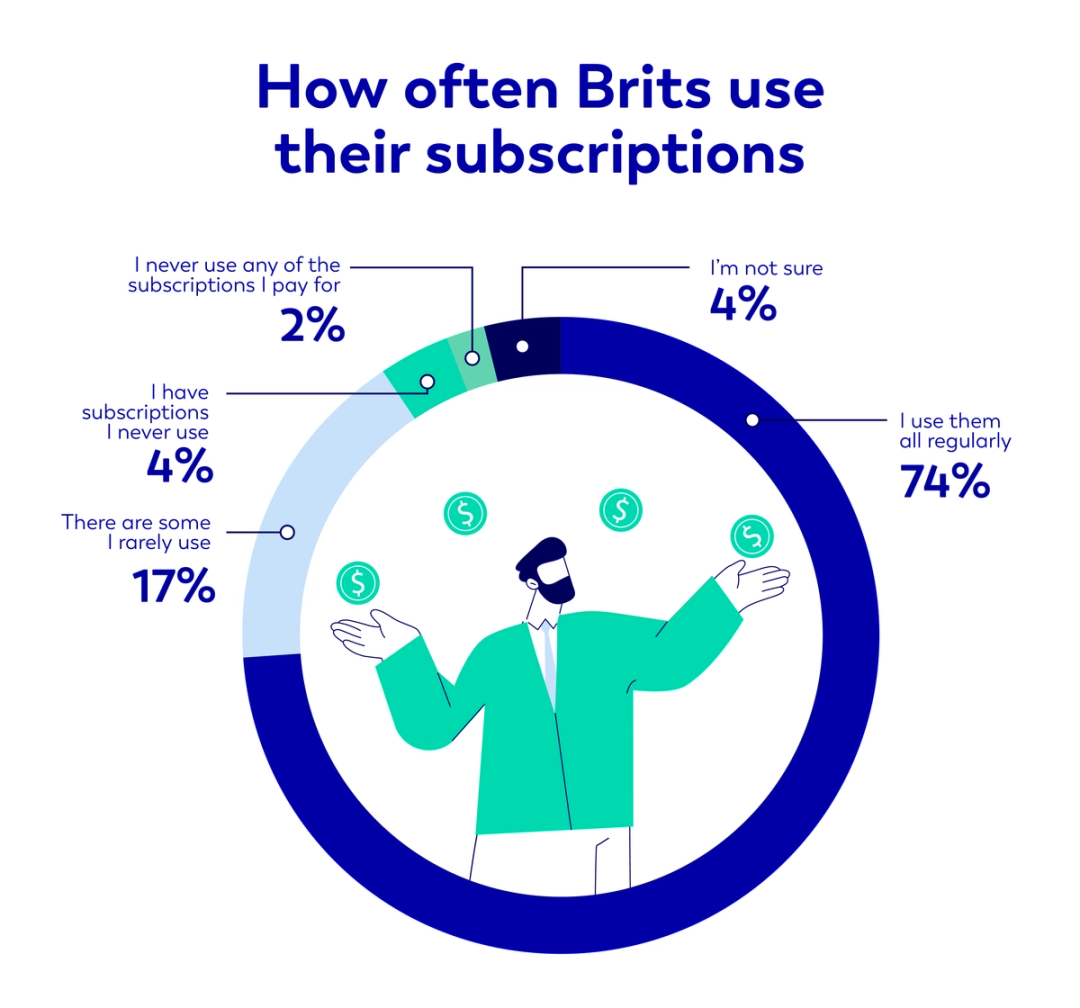The UK’s Subscription Service Spending in 2025
Aqua reveals Brits spend £786 a year on subscriptions. See how spending varies across the UK and get tips to track and manage your monthly costs

With the cost of living continuing to rise in the UK, it’s never been more important to get your outgoings under control. It can be difficult to know where to start, though, as essential expenses can take up a large portion of monthly budgets, and spending patterns on subscription services can vary widely. So, where can savings be made?
To gain insight into how people in the UK are spending on subscriptions, we surveyed 2,000 individuals aged 16 and over about their subscription habits. Our research reveals that the average Brit spends a staggering £786 per year on subscriptions.
But our study looks beyond the numbers, exploring how people feel about these costs. Alarmingly, we found that 17% of Brits don’t track their subscriptions at all. With this in mind, we’ve put together a summary of our findings, along with guidance on how to stay on top of your subscriptions and make informed choices about your spending.
How subscription spending varies across the UK
Subscription services are becoming increasingly popular across the UK, with 20.6 million households (around 68%) now accessing at least one subscription video-on-demand service in the last six months up from 20 million in the six months before [1]. However, spending habits differ widely depending on the individual. Some services require longer-term commitments, often lasting a year or more, which can add up quickly.
According to our study, the average Brit pays for 2.8 subscriptions, averaging a total monthly spend of £65.50 (£786 annually). There is a distinct range of subscription spending, with half of the population (50%) spending under £40 a month on subscriptions, while one in ten (10%) spend £200 or more.
Subscribers spend £27 per month on entertainment subscriptions, which could include streaming services such as Netflix and Disney+. They spend £21 per month on food and drink subscriptions like HelloFresh and Gousto, and £15 per month on shopping/fashion subscriptions. The data also highlights a notable difference in spending between men and women. Men outspend women across all major subscription categories, around 61% more overall.

The highest-spending cities in our survey were Manchester (£81 per month), London (£77 per month), and Belfast (£72 per month), while Plymouth (£41), Sheffield (£50), and Bristol (£51) reported the lowest. Food and drink subscriptions show the most striking regional variation: Northern Irish respondents spend an average of £53 per month, over 900% more than those in Glasgow and Plymouth (both £5 per month).

Subscription habits and usage in the UK
Our survey explored how people engage with the services they’re paying for and found that one in five are paying for a service they rarely use. A small proportion, 2% of respondents, report that they don’t use any of their paid subscriptions at all, which ultimately is a waste of money.
We also examined subscription-sharing habits. Almost half of the respondents report using subscriptions paid for by someone else. Among 16-24 year olds, only 25% pay for all of their own subscriptions, while 69% report using others’ accounts at least occasionally. It’s important to note that using someone else’s account can often be against the service’s terms and conditions, which can lead to account suspension.

Tracking subscription spending
As subscription-based spending increases, keeping track of payments can become more complex. Half of Brits (52%) monitor their subscriptions by manually checking their bank statements or banking app, but with contracts generally continuing on a rolling basis after expiry, it’s easy to lose sight of recurring payments. Older adults in particular may be at risk of losing track; almost a quarter (25%) of those aged 55+ say they don’t track their subscription spending at all. Subscription management apps and spreadsheets can help you stay on top of your spending, but they are relatively underutilised; 17% of Brits admitted that they don’t track their subscription spending at all. Less than one in five people (18%) use an app to track their subscriptions, and women (12%) are less than half as likely to use one as men (24%). Brits aged 25–34 are the most likely to take a proactive approach, with over a third (35%) using a budgeting or spending app to keep on top of their subscriptions.
How people pay for subscriptions
Many subscription services offer multiple payment methods to fit your personal situation. Typically, paying upfront or committing to a longer contract can result in a lower overall cost. For example, Disney+ offers a £19.98 saving across the year if you pay upfront, while Prime and Apple TV offer savings of £17.98 and £12.88.
A year-long subscription might work out cheaper than a month-by-month subscription, but that assumes you will need the service throughout that period, as up-front payments are unlikely to be refunded if you no longer need the service before the end of your contract.
Our survey found that almost three-quarters (74%) of Brits exclusively pay for their subscriptions monthly. This could be for a number of reasons, including rising living costs, making up-front payments for annual subscriptions less appealing.
Paying monthly may also allow users to change or switch between services depending on which ones they wish to use, rather than committing to a full year.
Tips for managing your subscriptions
Our research shows that a considerable proportion (22%) of subscription spending is on services that are used infrequently, or not at all. We spoke to Scott Yule, Commercial Strategy Director at Aqua, who gave us the following tips on ways to approach managing your subscription spending:
Use subscription management apps:
This provides oversight of all subscriptions in one place, making them easier to manage and ensuring you are sticking to your allocated budget. This also helps you keep an eye on any subscriptions you may no longer need.
Monitoring bank statements regularly
Keep an eye on your outgoings to see if there are free trials or deals that have now switched to more expensive fees, or if any subscription renewals have increased in price.
Budget and prioritise where you can
Work out how much money you have available to spend on different subscriptions. This will give you a better idea of what you can reasonably afford and where your money might be best spent, including whether certain subscriptions are actually saving you money or not.
Do you really need it?
Before committing to a subscription, it’s good to ask yourself if you really need it. Consider how often you will actually use the service and whether there are cheaper or free alternatives that could meet the same need.
Methodology & sources
We used the following methods to establish the UK population’s expenditure on, and attitude towards, subscription services:
Survey of 2,000 people aged 16 and over on their subscription habits, carried out in June and July 2025.
Monthly vs Annual subscription costs:
[1] Barb releases Q4 2024 SVOD subscriptions data
Failure to make payments on time or to stay within your credit limit means that you will pay additional charges and may make obtaining credit in the future more expensive and difficult.
Contributors

Hayley Bevan
Hayley is an editor at Aqua.

Victoria Smith
Victoria is an editor at Aqua.
You might also like
Slide 1 of 3
Financial Learnings and Mistakes 2025
New survey from Aqua reveals the UK’s biggest financial learnings and mistakes
Hayley Bevan

Brit's social spending habits
Aqua has conducted a new survey to reveal the social spending habits of people across the UK.
Sharvan Selvam

The Great British Beer Garden
Experts at Aqua reveal the best UK cities for beer gardens, and how to successfully budget for summer.
Hayley Bevan
The smart way to build better credit
Aqua is the credit card that gives you the power to improve your credit score
